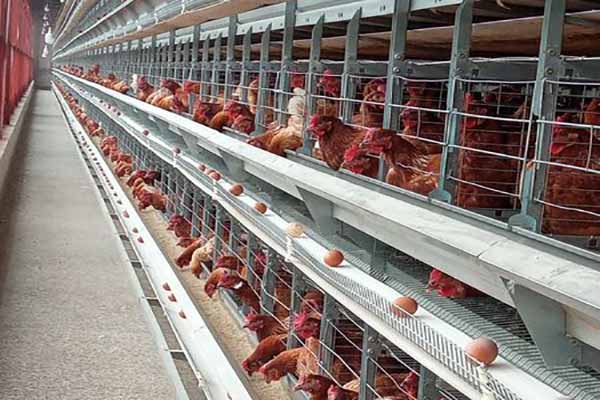Optimizing Uganda’s Large Scale Poultry Business with Advanced Equipment
Time : 2025-06-26
In recent years, Uganda has seen a significant growth in its poultry industry, with large-scale poultry businesses becoming a cornerstone of the country’s agricultural sector. The adoption of advanced equipment and technology has played a crucial role in this transformation. This article delves into the intricacies of optimizing Uganda’s large-scale poultry business, focusing on the strategic use of professional poultry equipment to enhance efficiency, productivity, and profitability.
Introduction to Uganda’s Poultry Industry
The poultry industry in Uganda has experienced a remarkable evolution, primarily driven by the increasing demand for poultry products. With a growing population and a rising middle class, the consumption of meat and eggs has surged. This has prompted large-scale poultry businesses to emerge, aiming to meet the market’s needs. However, to sustain this growth, these businesses must invest in the right equipment and technology.
Selecting the Right Poultry Equipment
The first step in optimizing a large-scale poultry business is to select the appropriate equipment. Here are some key considerations:
1. Brooding Systems
Brooding systems are essential for the initial stage of poultry production. They provide a controlled environment for chicks to grow and develop. The following are some popular brooding systems:
– Heated Brooders: These are used to maintain a consistent temperature, which is crucial for the chicks’ survival and growth.
– Waterbed Brooders: These systems provide warmth through radiant heat and help in maintaining humidity levels.
2. Feeding Systems
Feeding systems are critical for ensuring that the birds receive the right nutrition at all stages of their growth. Here are some types of feeding systems:
– Automatic Feeders: These systems dispense feed at predetermined intervals, ensuring consistency and reducing labor costs.
– Gravity Feeders: Ideal for small-scale operations, these feeders rely on gravity to dispense feed.
3. Watering Systems
Access to clean, fresh water is vital for the health and productivity of poultry. The following watering systems are commonly used:
– Nipple Drinkers: These are efficient and prevent waste, as they provide water on demand.
– Automatic Drinkers: These systems maintain consistent water pressure and flow, ensuring that birds have access to water at all times.
Advanced Equipment for Enhanced Productivity
In addition to the basic equipment, large-scale poultry businesses in Uganda can benefit from advanced equipment that further optimizes operations:
1. Automated Egg Collection Systems
Manual egg collection can be time-consuming and labor-intensive. Automated egg collection systems, such as belt conveyors and collection points, can significantly reduce labor costs and minimize the risk of eggs being damaged.
2. Environmental Control Systems
Maintaining the right environmental conditions is crucial for the health and productivity of poultry. Advanced environmental control systems can monitor and adjust temperature, humidity, and air quality in real-time.
3. Feed Pelletizing Machines
Feed pelletizing machines convert feed ingredients into pellets, which are easier to digest and store. This can improve feed conversion rates and reduce waste.
Training and Maintenance
While investing in advanced equipment is crucial, it is equally important to ensure that the staff are properly trained and that the equipment is well-maintained. Regular maintenance can prevent downtime and extend the lifespan of the equipment.
Challenges and Solutions
Despite the benefits of advanced equipment, large-scale poultry businesses in Uganda face several challenges:
1. Energy Costs
High energy costs can impact the profitability of poultry operations. Investing in energy-efficient equipment and adopting renewable energy sources can help mitigate this issue.
2. Disease Control
Poultry diseases can be devastating to large-scale operations. Implementing strict biosecurity measures and investing in disease monitoring systems can help prevent outbreaks.
Conclusion
Optimizing Uganda’s large-scale poultry business with advanced equipment is a strategic move that can lead to increased efficiency, productivity, and profitability. By carefully selecting the right equipment, ensuring proper training and maintenance, and addressing the unique challenges faced by the industry, Uganda’s poultry sector can continue to grow and contribute significantly to the country’s economy.
Tags












